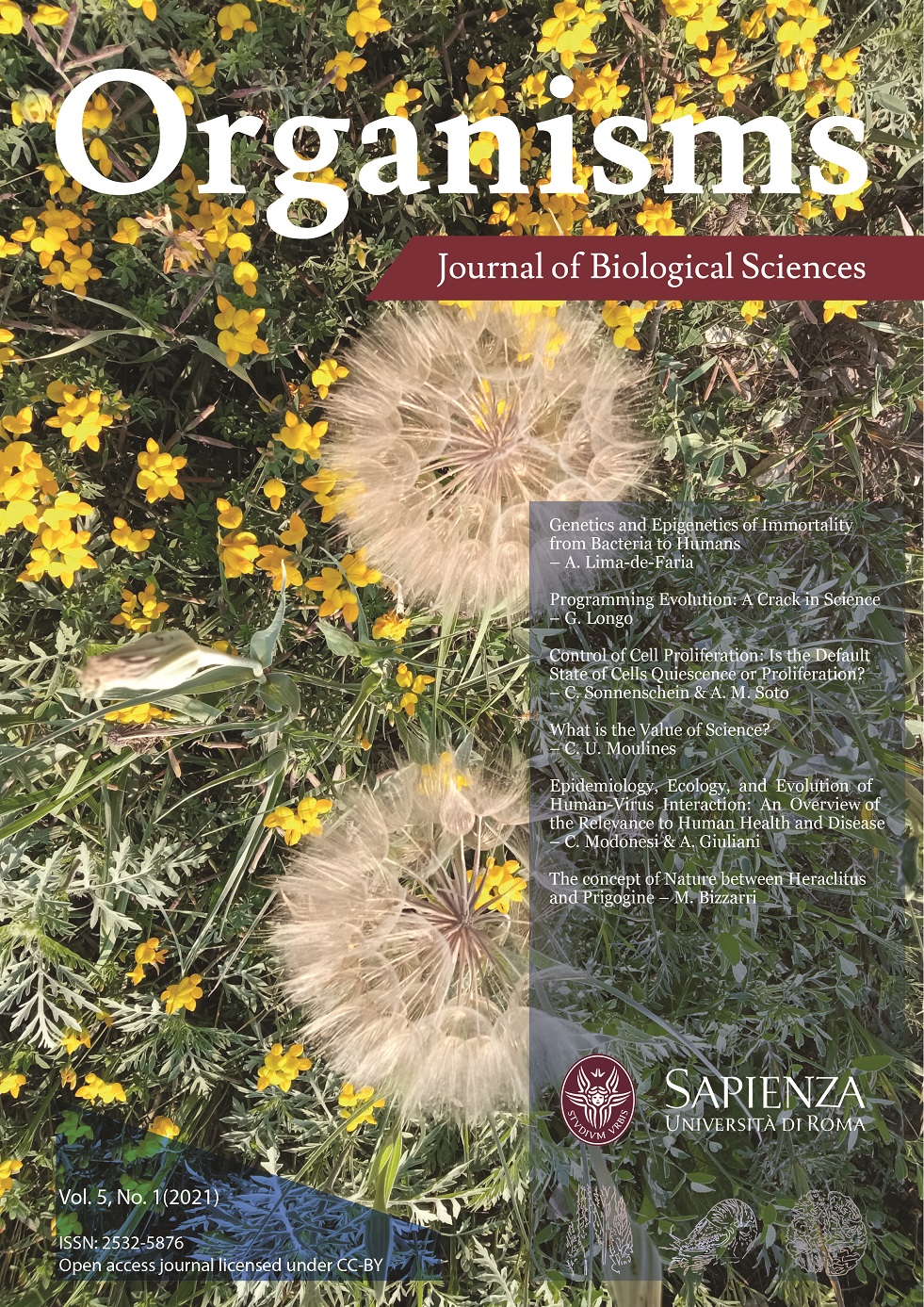Genetics and Epigenetics of Immortality from Bacteria to Humans
DOI:
https://doi.org/10.13133/2532-5876/17508Abstract
In humans the search for immortality became concretized by 6,000 B.C. leading to the building of large tombs and statues to
immortalize the dead. This refusal to accept death is not limited to Homo sapiens. It occurs already in bacteria, extends to invertebrates and vertebrates, and includes even plants which avoid death by activating defense genes.
It turns out that consciousness is an obligatory prerequisite of death refusal. Experiments in single cell organisms (protozoa)
revealed that a minimal memory of a previous attack was a prerequisite to initiate active defense. Already in plants consciousness
is directly connected with the expectation of danger. They get advanced information from volatile compounds released from other plants that elicit their defense against insects. Consciousness is also not connected with larger brains, as disclosed by a comparison of the number of neurons in birds and apes.
Cloning is a natural form of ensuring immortality, which has been used by plants and animals before humans appeared on the
planet. Cloning in humans was considered in the 1930s suggesting the cloning of Einstein. This procedure is not ethical and irrelevant. Besides such an individual would not have easily survived the harassment of the mass media.
More significant is that epigenetic effects disrupt and diminish the perpetuation of immortality by changing the genome. The
evidence on epigenetics is now overwhelming extending from the simple eukaryotes (yeast) to plants and humans. RNAs have an
important role in modifying gene function during development and they can even be incorporated into the genome creating novel gene constellations. Immortality is becoming more difficult to achieve than expected.
Downloads
Published
How to Cite
Issue
Section
License
Copyright (c) 2021 Antonio Lima-de-Faria

This work is licensed under a Creative Commons Attribution 3.0 Unported License.
Copyright Agreement with Authors
Before publication, after the acceptance of the manuscript, authors have to sign a Publication Agreement with Organisms. The authors retain all rights to the original work without any restrictions.
License for Published Contents

You are free to copy, distribute and transmit the work, and to adapt the work. You must attribute the work in the manner specified by the author or licensor (but not in any way that suggests that they endorse you or your use of the work).





